
|

|

|
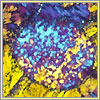

|
|
3.5 Billion Years Ago
Long before Earth's landmasses looked as they do today, a 12-
to 30-mile-wide meteor smacked into the ocean somewhere on the
planet and started a tsunami powerful enough to inundate all
land areas. Only the tallest mountains remained above water.
Scientists have found remnants of the catastrophe in some of
the oldest rocks on Earth—in Western Australia's Pilbara
Block and in South Africa's Barberton Greenstone Belt. They
are still actively searching for the enormous crater the
impact would have created.
|
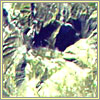

|
|
Thera, Ancient Greece, 1645 B.C.
The volcanic eruption of the ancient Greek island of Thera was
among the largest in thousands of years. Thera's blast
collapsed its cone, producing a tsunami often blamed for the
fall of the Minoan civilization on nearby Crete. Little
scientific evidence for this theory existed until recently,
when geologists finally uncovered proof that the tsunami's
waves were massive when they hit Crete. They would have
destroyed ports, crippled the maritime economy, and led to
devastating crop failures, potentially catalyzing the Minoans'
decline in subsequent years. Research into Thera's tsunami is
ongoing.
|


|
|
Cascadia Fault, January 26, 1700
Geologists recently uncovered evidence in dead trees and
layers of mud and sand that a massive earthquake ruptured the
entire Cascadia fault along the west coast of the U.S. in
1700. They believe a tsunami formed there and rippled across
the Pacific, reaching Hawaii, Japan, and even Australia.
Indeed, records from Japan describe a powerful "orphan"
tsunami on that day whose earthquake was not felt. The
Cascadia fault has experienced at least seven quakes in the
last 3,500 years, all of them between 300 and 1,000 years
apart. It has been 305 years since the last event, and experts
say the next one could occur at any time.
|
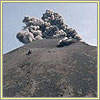

|
|
Krakatoa, Indonesia, August 27, 1883
After 300 years of dormancy, the small volcanic island of
Krakatoa between Java and Sumatra erupted and collapsed in
1883, killing more than 36,000 people. Most victims died from
the enormous tsunami the blast unleashed. Mountains of
seawater more than 140 feet high and carrying 600-ton blocks
of coral wiped out dozens of villages along the coast of Java
and Sumatra. The economy of the region was disrupted for
hundreds of miles. Krakatoa produced the first tsunami
recorded and studied globally by scientists and, as one of the
most destructive tsunamis in history, it continues to serve as
a valuable example for tsunami experts.
|
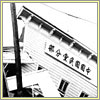

|
|
Aleutian Islands, Alaska, April 1, 1946
For almost 60 years, the leading theory about this tsunami
claimed that a powerful underwater earthquake triggered it.
But a seafloor-mapping project recently conducted at the
Scripps Institution of Oceanography found no evidence to
support this idea, forcing experts to rethink their theory.
They are trying to determine what event could have produced
the wave's devastating force, allowing it to pummel Hawaii
with 60-foot waters more than five hours after it did its
first damage in Alaska, where local surges rose to 138 feet.
The tsunami killed 123 people and cost millions of dollars in
damages.
|


|
|
Lituya Bay, Alaska, July 9, 1958
Tsunamis generally reach a maximum vertical height onshore,
called a run-up height, of no more than 100 feet above sea
level. A notable exception was the 1958 tsunami triggered by a
landslide in a narrow bay on Alaska's coast. Its over
1,700-foot wave was the largest ever recorded for a tsunami.
It inundated five square miles of land and cleared hundreds of
thousands of trees. Remarkably, only two fatalities occurred.
In the wake of the Lituya tsunami, scientists realized for the
first time that a landslide—90 million tons of rock in
the case of Lituya—could produce a giant wave.
|


|
|
Valdivia, Chile, May 22, 1960
The largest earthquake ever measured, a 9.5, started a series
of tsunamis in the Pacific Ocean that devastated Hawaii. The
waves even reached Japan, 10,000 miles away from the
epicenter, where they took 122 of the approximately 5,000
total lives lost. The Chilean tsunami taught experts two
important lessons: that an earthquake felt on land can warn of
a tsunami, as can a rapid rise or fall of coastal waters.
After the 1960 wave, the Pacific Tsunami Warning Center was
linked to an international data and warning network for the
first time. It uses hundreds of seismic stations worldwide to
assess tsunami risks in the Pacific, where most occur.
|
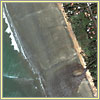

|
|
Indian Ocean, December 26, 2004
With over 250,000 people dead or missing, the 2004 tsunami was
one of the most catastrophic natural disasters in modern
times. A magnitude 9.0 earthquake in the seafloor more than 18
miles below the Indian Ocean's surface caused the wave. It
released enough energy, scientists estimate, to boil 40
gallons of water for every person on Earth. None of the
countries most severely affected had a tsunami warning
mechanism to alert people of the impending wave, and since
tsunamis are rare in the Indian Ocean, local people did not
know to flee inland after a tremor. Experts around the world
are now looking at ways to prevent a similar future
catastrophe.
|


|
|
Canary Islands, Future
One group of scientists believes that conditions are ideal for
a tsunami-producing landslide on the island of La Palma in the
Canaries. The western flank of the island's active volcano has
the potential to give way in a future eruption. If it did, a
huge mass of rock weighing 500,000 million tons would fall
into the Atlantic Ocean. Experts in Switzerland have simulated
the potential effects of such a collapse. Their model shows
that it could generate a wave capable of engulfing every port
on the east coast of the U.S., which they believe may have
happened during a similar tsunami 120,000 years ago.
|

|

|

